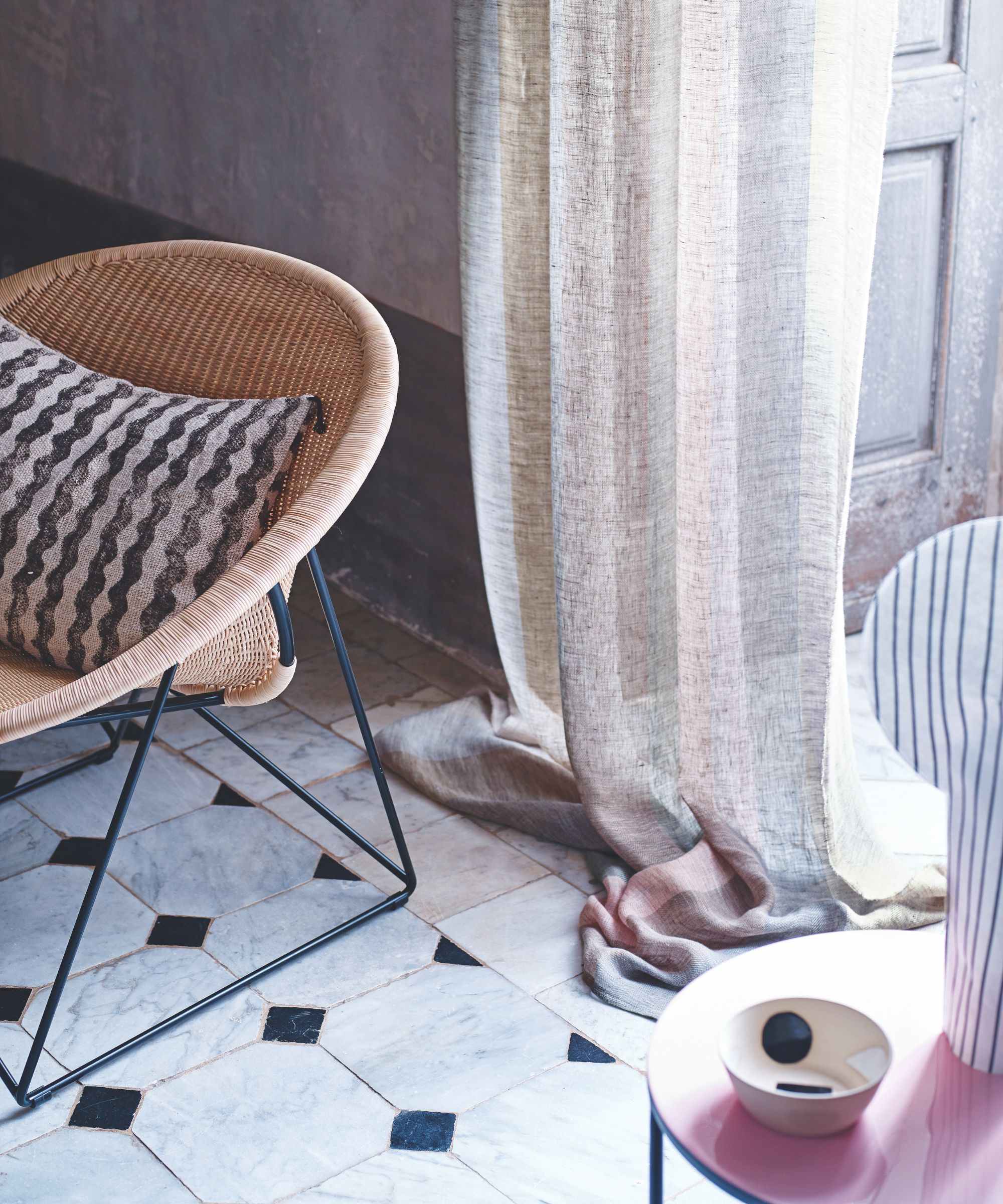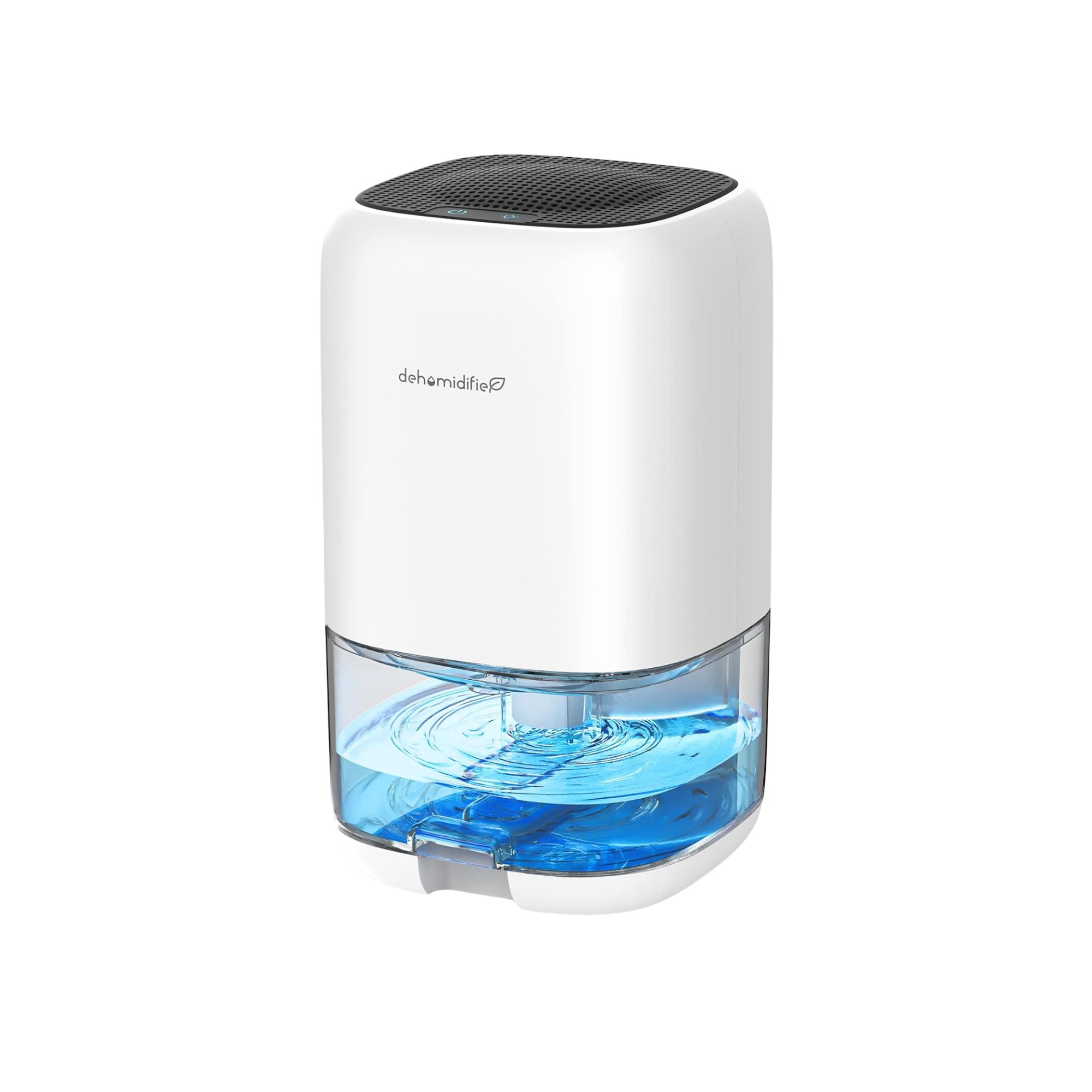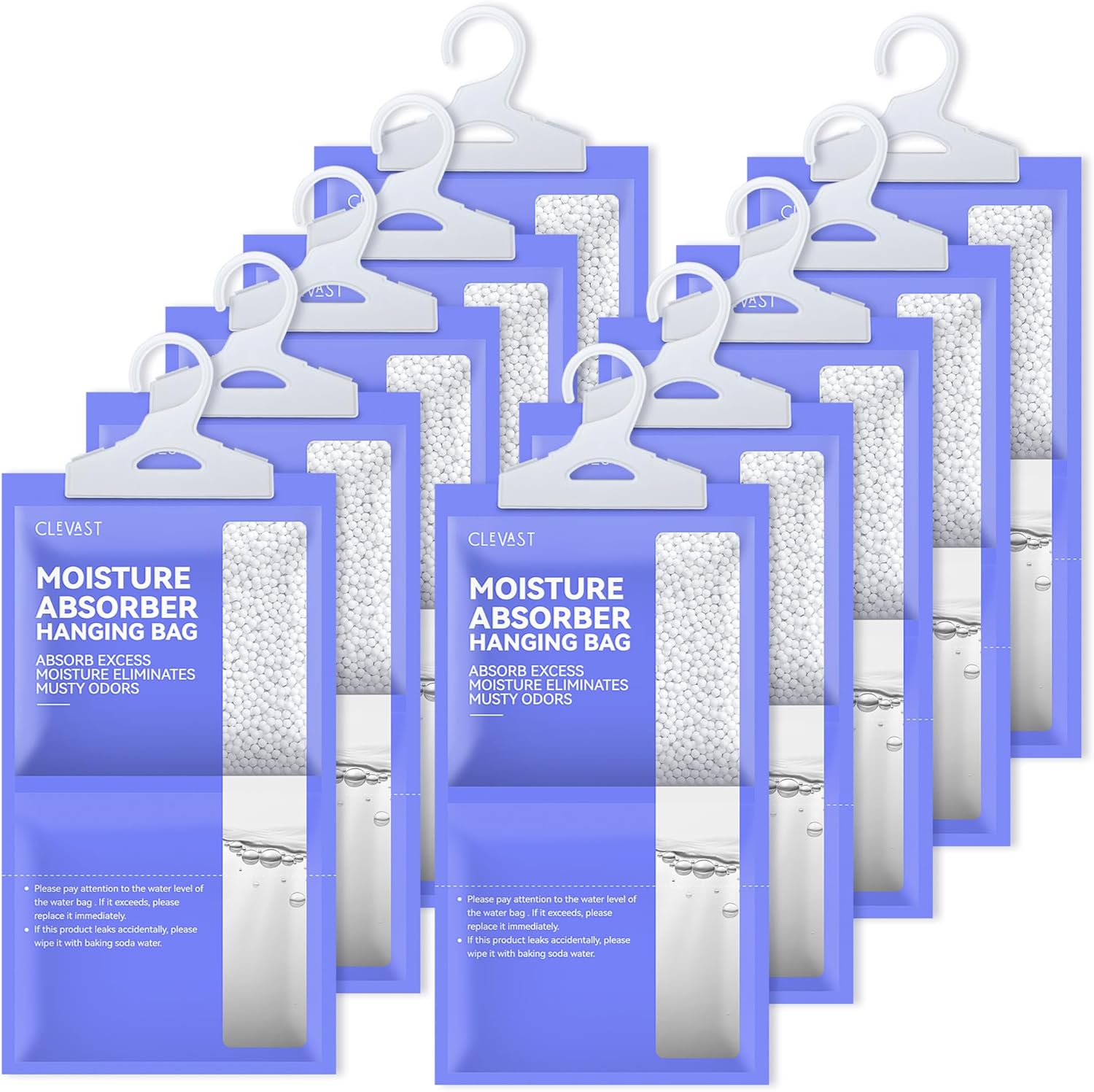It Might Seem like a Cliché Fix for Window Condensation, but This 5-Minute Morning Reset Is the Quickest and Simplest Way – I’ve Done It for Years
I do it every morning, and it takes less than five minutes


The reality of cozying up indoors over winter is that the condensation we produce through cooking, showering, drying laundry, and simply breathing in and out is inevitable.
Getting rid of condensation with a sensible, consistent daily routine is the key to avoiding long-term problems, along with reducing moisture in the home overall.
This is the five-minute reset I do every morning, and it has helped prevent a host of problems, including the risk of mold and respiratory aggravation, for many years in my home.
My 5-Minute Morning Window Condensation Fix
First, I simply use a microfiber cloth to wipe window condensation away before I start work every morning. I like the Mr.SIGA ones available in bulk from Amazon or at Walmart to dry the condensation that’s collected overnight on my upstairs windows.
This might sound like a bit of a cliché, but if you don’t want to spend money on one of the best dehumidifiers (with upfront and running costs), or lose the heat in your house with open windows, this is a simple step you can integrate into your morning routine.
The problem isn’t that there is a little bit of moisture on your windows; it’s if the moisture stays, and either eventually damages the surrounding materials, such as the plaster on your walls or the fabric of your window treatments, or it creates the perfect setup for mold spores to settle and grow their colonies.
Mold in the home, especially black mold, can lead to respiratory problems and health issues, as well as unsightly marks and unpleasant musky smells.
Design expertise in your inbox – from inspiring decorating ideas and beautiful celebrity homes to practical gardening advice and shopping round-ups.
Wiping away the condensation every morning, and throwing open your windows for five minutes, also known as shock ventilation, will allow fresh air to circulate, and make sure any mold spores in the air do not have a cushty home to sink into and thrive.
Karina Toner, professional cleaner and operations manager at Spekless, says, 'You’re absolutely right about wiping the window condensation. Moisture sitting on cold surfaces is a welcome mat for mold spores, so that quick daily pass with a microfiber cloth is one of the simplest, most effective habits you can build.
'Microfiber is perfect for the job because the dense weave pulls up fine particles and moisture instead of just pushing them around, and it doesn’t lint or smear as some cotton cloths do. Plus, it holds up well with frequent washing.'
I do this every morning for the windows in my bedroom and our daughter’s, which accumulate moisture overnight from our breath, and the internal doors being closed as we sleep.
Our bathrooms are well ventilated every morning and after every shower, as well as being cleaned regularly. I also have a few simple steps that I take after a shower to prevent mold. Alongside using the extractor fan in the kitchen when cooking, and refreshing the indoor air with a blast of cold winter outdoor air afterwards for a couple of minutes, it all plays into keeping the overall humidity in my home from building up.
Cleaner Karina says, 'Overall, your routine is exactly the kind of low-effort, high-impact approach most homes need. It lets you stay ahead of the mess without overworking yourself, which is usually what makes the biggest difference in the long run.'
If you're not sure where your home stands on humidity, measure indoor moisture levels and surface temperatures on exterior-facing walls. HVAC pro and founder of Air Conditioner Lab, Josh Mitchell, says, I use a basic IR thermometer and a digital hygrometer. If the walls are below 60°F and the humidity is above 55 percent, you're in the danger zone.'
You can grab a mini hygrometer from Walmart at minimum cost, and IR guns at Amazon are affordable too, especially with Black Friday deals on.
Once a month, I also use a commercial mold-killing spray, which is bleach-free and odorless, available from Amazon, to make sure any sneaky mold spores are neutralized on my window panes and the glass, so there is no opportunity for their colonies to secretly grow.
Expert cleaner Karina adds, 'When it comes to mold, I’m not one to take chances, so I reach for a proper mold remover anytime I see that early shadowing along frames or sills. It cuts the risk and clears things up quickly.
'For commercial options, RMR‑86 Instant Mold & Mildew Stain Remover and Clorox Plus Tilex Mold & Mildew Remover Spray are both reliable top performers. If you prefer a natural route, a mix of hydrogen peroxide and water works surprisingly well for light mold on hard, non-porous surfaces. I use one part 3% hydrogen peroxide to a ratio of two parts water; it’s gentle but still strong enough to break down spores before they get out of hand.'
You can pick up hydrogen peroxide at Walmart on your next visit, or order from Amazon for fast delivery.
These simple steps will also help you avoid the longer-term problems that unchecked window condensation can bring.
How to Reduce the Causes of Condensation at Home For Good

Open doors and windows to allow for shock ventilation: Daily five-minute blasts of fresh air.
Keeping humidity at home between 30-50% is ideal to avoid mold problems at high levels, and scratchy throats and dry skin at lower levels.
There are plenty of actions, big and small, that will help reduce condensation in your home.
- Ensure adequate daily ventilation.
- Don’t ventilate externally when it’s raining outside, as this can increase, rather than control the humidity in your home.
- Wipe down moisture on windows, frames, and surfaces daily. If you spot a line of mold, clean it with a commercial cleaner such as RMR‑86 Instant Mold & Mildew Stain Remover from Amazon.
- Open curtains and blinds daily and allow sunshine to flood your home.
- Wash curtains and drapes regularly to keep them clean and fresh.
- Use a good dehumidifier when drying laundry indoors, in bedrooms at night, and to help dry ceiling leaks quickly.
- Hang humidity bags, available in bulk packs at Amazon.
- Use humidity blocks, available at Amazon, in hidden corners.
- Improve insulation at home.
- Draft-proof to regulate your home’s climate and stop the see-sawing of the indoor temperature, which can increase window condensation.
- Run the heating with a smart thermostat to better regulate indoor heat consistently. This will also save you money in the long term.
- Layer window treatments to trap your home's warm air against the window, or keep your home’s warm air away from cold windows. This buffer space between hot and cold air flows will reduce condensation on windows.
- Keep beds and furniture away from radiators. The heat dries out the air, and blocking it encourages condensation.
- Allow for moisture channels – space around vents, and keep furniture away from walls so mold cannot accumulate unseen where air doesn't often flow.
Why I Prefer Microfiber Over Paper Towels
The reasons are simple. Microfiber is durable, reusable, and washes extremely well, making it a great way to be more sustainable at home when you are cleaning or maintaining your space. It also soaks up moisture much better than paper towels, leaving you with zero smears on your windows when cleaning or after soaking up that morning's window condensation.
After I use microfiber clothes to wipe down my window condensation in the morning, I use a homemade spray with a one-to-one ratio of water to white vinegar, available in a resealable 128 Fl. Oz bottles at Walmart, all over the cloth to kill any mold, viruses, and bacteria. I pop that in my washer along with other items that can tolerate a hot wash and dry, and that’s it.
If I have nothing to wash that day, I air dry the clothes I used to stop on the condensation to stop them smelling of mildew, and then pop them in with the next laundry load.
In all the years I have done this five-minute morning condensation reset, I’ve found no adverse effect from using the same cloth on my windows for two or even three days in a row, as long as it’s dried in between and spritzed with vinegar to prevent active mold spores or bacteria from making it smell.
What to Shop

I color coordinate my cloths to tasks and rooms across my home to stop any cross contamination. This pack has multiple colors and are machine washable. Skip the fabric softener to avoid the absorbent properties from dulling over time.

I run my small dehumidifier with the air intake valve facing my wet laundry. This not only speeds up drying times exponentially, but prevent all that moisture being released from your laundry into the air in your home. It's also great for drying out ceiling leaks quickly.

Hang these discreetly behind your curtains and watch them fill up with moisture over time. When full (500 ml capacity each), put them in the trash. Use them in bathrooms, bedrooms,entryways and even closets.

Place these humidity catches boxes on windowsills or in corners with poor air flow and moisture problems. They are leak-proof and long-lasting.

This scrub-free formula is one of expert cleaner Karina Toner's top picks for tackling mold in the home early. Spray and wipe, it's that simple.

You can use this in a home-made mold-killing spray as instructed by professionoal cleaner Karina, as well as many antiseptic uses, including on cuts and grazes on the skin.
The bottom line for me, having tried dozens of cleaning methods, is that we don’t need to overcomplicate dealing with condensation in the winter.
It happens because there isn't enough fresh air at the same time as cooking, laundry, bathing, and sleeping are going on, all of which will introduce some added humidity.
Wipe the moisture every day, be consistent in using extractors when cooking, and be mindful of the areas you dry laundry indoors, or leave wet towels, and you’ll avoid mold and problems that result from condensation much more easily.

Punteha was editor of Real Homes before joining Homes and Gardens as Head of Solved. She has written and edited wellbeing, lifestyle, and consumer pieces for the national press for 17 years, working across print and digital newspapers and magazines. She’s a Sunday Times bestselling ghostwriter, former BBC Good Food columnist and founding editor of independent magazine, lacunavoices.com. Punteha loves keeping her home clean, has tested and reviewed the latest robot vacuums and video doorbells, enjoys cooking, DIY, decluttering and spending weekends personalizing and organizing her newly-built home, tackling everything from plumbing to tiling and weatherproofing, to home fragrancing and cleaning with luxurious smelling homemade solutions.
You must confirm your public display name before commenting
Please logout and then login again, you will then be prompted to enter your display name.